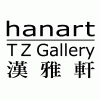 |
Hanart TZ Gallery
401, Pedder Building
12 Pedder Street
Central, Hong Kong map *
tel: +852 2526 9019
fax: +852 2521 2001
send email
website
|
Born in Liaoning in 1980
Graduated from the Central Academy of Fine Art in 2006. Currently lives in Beijing. I am presently creating a series of artworks made up from the Holy Bible, Koran, Diamond Sutra, Doctrine of the Mean, Dao De Jing, and Quotations from Chairman Mao Zedong. However, I have no intention of promoting any form of Idealism. My hope is that the visual impact from this series of works will somehow inspire people to reflect on spirituality, culture, religion, and cultural trends, as well as the present social situation. It is a means of persuading the public to turn their backs on superficial pleasures, awaken their spiritual tranquility, and enabling them to regain confidence in our own culture and religious beliefs. The artworks in this series are produced by first converting the above-named classics into paper pulp, after which this pulp is then transformed into a kind of moveable Braille type. Afterwards, a scroll of paper is placed on the plate and a rubbing made by use of pencil. The finished works resemble the Chinese scroll. These scrolls are one meter wide and range in length from twenty meters on up. The entire project is expected to contain hundreds of scrolls, and if laid end to end, would be several thousand meters long. It is a momentous task, and so far I have only utilized the Holy Bible. It is estimated that the completion of this series will take several years. The creative process itself is also a form of self-cultivation and meditation. Perhaps the essence of the classics and artworks is best expressed through the use of such simple and pure tools as paper and pencil. The process of slowly applying a pencil to give form to these natural marks is way of indicating total submission to one's faith. A moment of stillness, a scroll of paper, with each line revealing one's mood, breath, and pulse. This, too, is a way of recording one's life. The mass-market edition of a classic has been deconstructed through the pounding of pestle. Next, the original text is mixed and reconstructed in the form of Braille plate to produce the final rubbing. The entire process is but a condensation of the gradual evolution of various civilizations and cultures in Chinese society. However, we, as normal viewers, cannot understand the content of these scrolls since we observe them through ordinary eyes. In a way, this reflects one kind of contemporary cultural reality. Perhaps the only way to comprehend these works is to approach them as we do religion: to listen and observe with one's heart; to become familiar with it, experience it, and feel it; to meditate on it, and seek to understand it intuitively.
|
|
|
